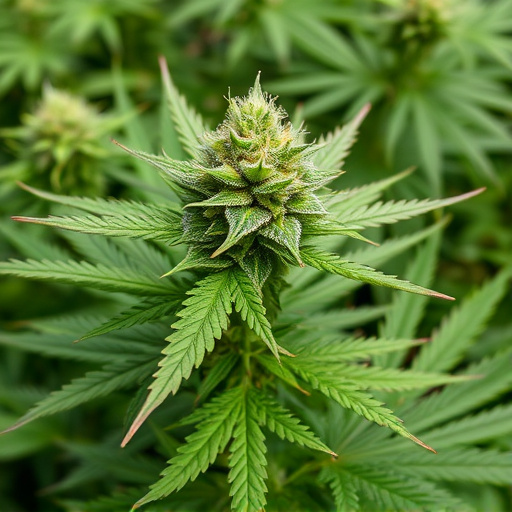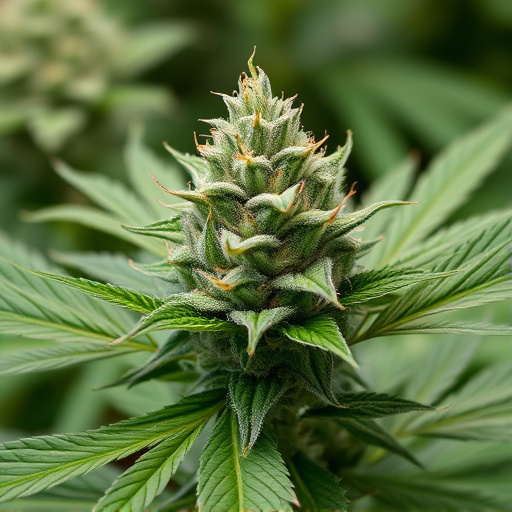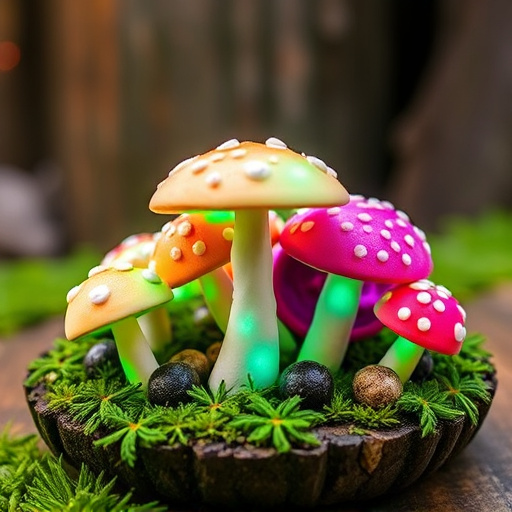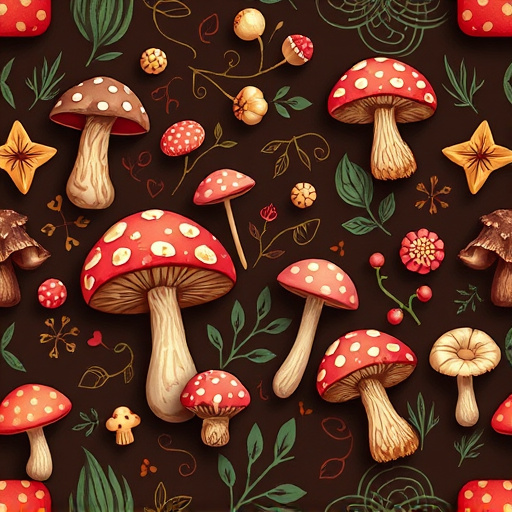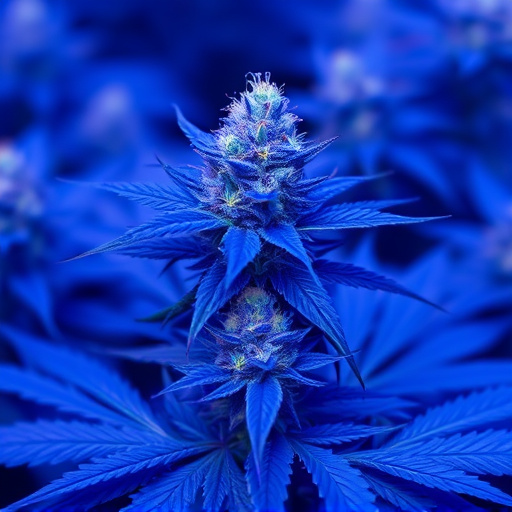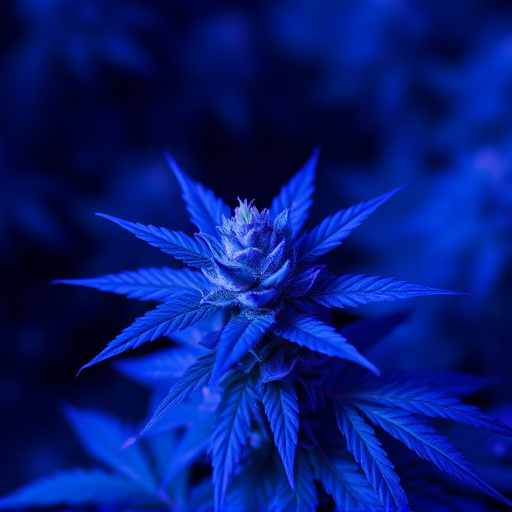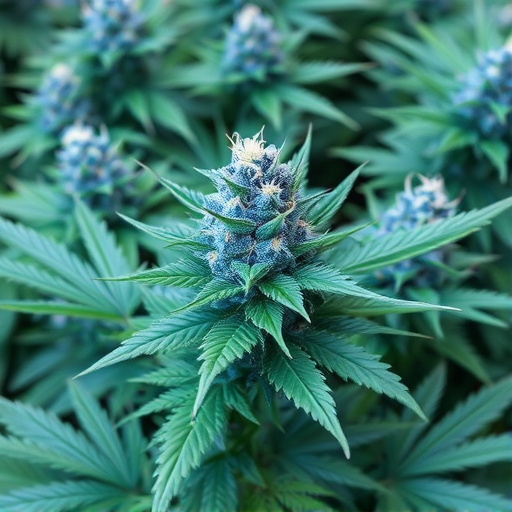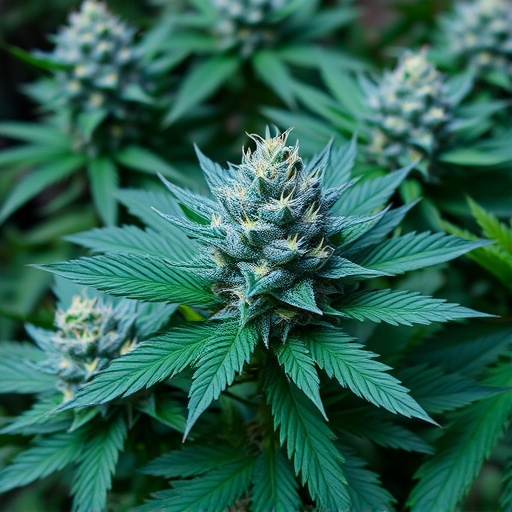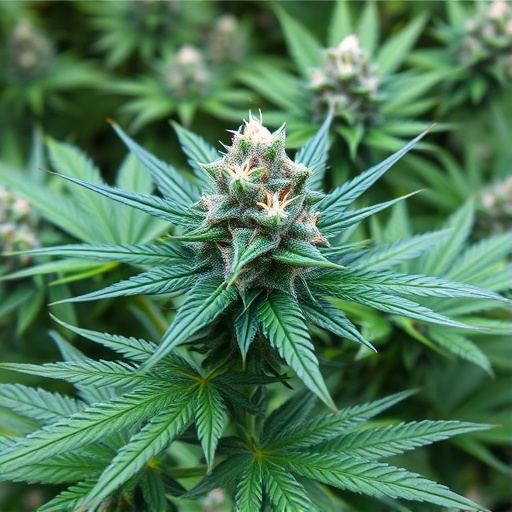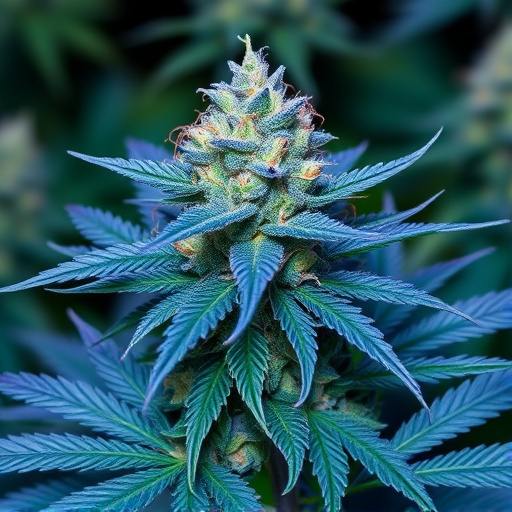Blue marijuana strains have gained popularity for their high THC content, exceeding 20%, achieved through selective breeding and precise cultivation methods. These strains' interaction with the human endocannabinoid system offers both therapeutic benefits and risks, including cognitive impairment and mental health issues. Responsible use involves setting boundaries, understanding personal tolerance, consulting healthcare professionals, and prioritizing mental well-being, as blue marijuana strains require education and mindfulness to balance potential advantages and risks.
“Explore the captivating world of high-THC blue marijuana strains and their profound impact on the mind and body. This article delves into the science behind these potent varieties, uncovering how their unique chemical composition interacts with our physiological and cognitive functions.
From understanding the effects on brain chemistry to navigating potential risks and benefits, we’ll guide you through the intricacies of high-THC blue marijuana. Discover responsible use practices to ensure a balanced approach to these powerful strains.”
- Understanding High-THC Strains: The Science Behind Blue Marijuana
- Body and Mind Interactions: Effects of High THC on Physiological and Cognitive Functions
- Navigating Potential Risks and Benefits: Responsible Use of High-THC Blue Marijuana
Understanding High-THC Strains: The Science Behind Blue Marijuana
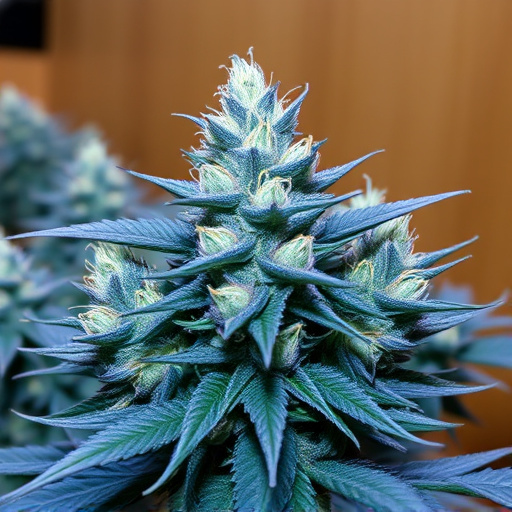
Blue marijuana strains have gained popularity for their high THC content, offering a unique experience for users seeking potent effects. THC, or tetrahydrocannabinol, is the primary psychoactive compound in cannabis, responsible for the plant’s intoxicating properties. Blue strains, often characterized by their distinct blue or purple hues, are cultivated through selective breeding and specific growing conditions to maximize THC levels.
The science behind these blue strains involves genetic manipulation and environmental factors. Breeders focus on enhancing the cannabis plant’s natural ability to produce high concentrations of THC while maintaining a balanced profile of other cannabinoids and terpenes. This meticulous process results in strains with THC levels often exceeding 20% or more, providing intense effects. Environmental variables like lighting, temperature, and feeding regimes also play a crucial role in determining the final cannabinoid composition, ensuring that blue marijuana strains live up to their reputation for potency.
Body and Mind Interactions: Effects of High THC on Physiological and Cognitive Functions
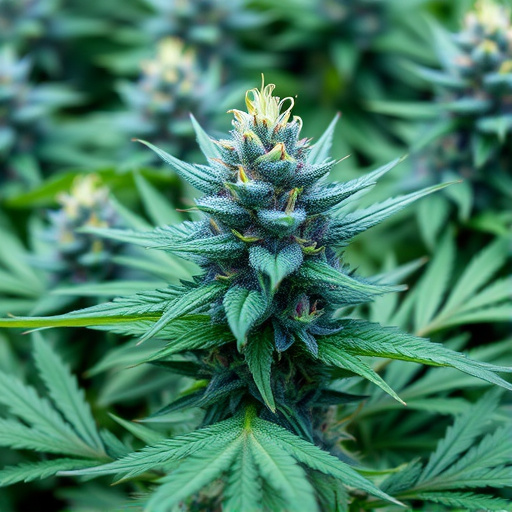
The interaction between the body and mind is a complex dance, and high-THC strains of blue marijuana play a significant role in this dynamic. THC, or tetrahydrocannabinol, is the primary psychoactive compound in cannabis that influences both physiological and cognitive functions. When consumed, THC interacts with the endocannabinoid system (ECS), which regulates various processes including mood, memory, appetite, and pain perception. In blue marijuana strains known for their high THC content, this interaction can lead to intense effects.
Physiologically, high doses of THC can cause increased heart rate, heightened sensitivity to sensory stimuli, and altered perception of time. Cognitively, it may impair short-term memory, concentration, and decision-making abilities. However, these effects vary based on individual tolerance, dosage, and strain specifics. Some blue marijuana strains with high THC content are renowned for their ability to induce intense euphoria and relaxation, while others can evoke more energetic or creative experiences. Understanding the complex interplay between THC and the body’s natural systems is crucial for both recreational users and those exploring medicinal applications of blue marijuana strains.
Navigating Potential Risks and Benefits: Responsible Use of High-THC Blue Marijuana
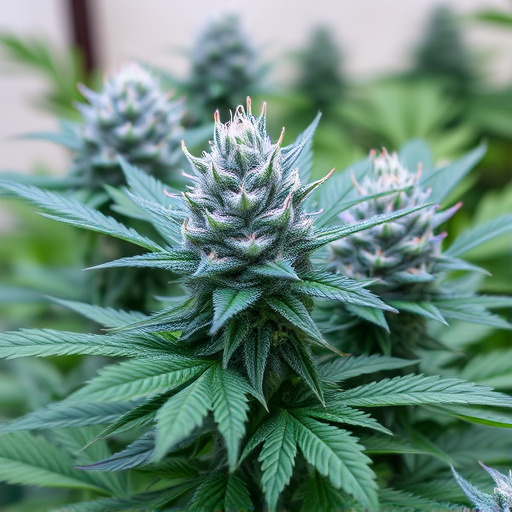
Navigating the potential risks and benefits of high-THC blue marijuana strains requires a balanced approach. While THC offers therapeutic advantages for specific conditions, its heightened potency poses concerns. Research suggests that excessive THC use may link to cognitive impairment, anxiety, and mental health issues, especially in young individuals. Responsible use involves setting boundaries, understanding personal tolerances, and prioritizing mental well-being.
Blue marijuana strains, known for their unique genetic makeup, can provide a range of effects. Some users report heightened creativity and relaxation, while others experience increased energy and focus. However, individual reactions vary widely. Educating oneself about specific strain profiles, consulting healthcare professionals, and adopting a mindful consumption practice are essential steps in harnessing the potential benefits while mitigating risks associated with high-THC blue marijuana.
Blue marijuana strains, with their high THC content, offer both potential therapeutic benefits and risks. Understanding the science behind these strains, their effects on the body and mind, and navigating their responsible use is crucial. While they may provide relief for certain conditions, it’s essential to be aware of potential adverse effects and always consult healthcare professionals. By doing so, individuals can make informed decisions regarding the use of high-THC blue marijuana strains, ensuring a safe and effective experience.
